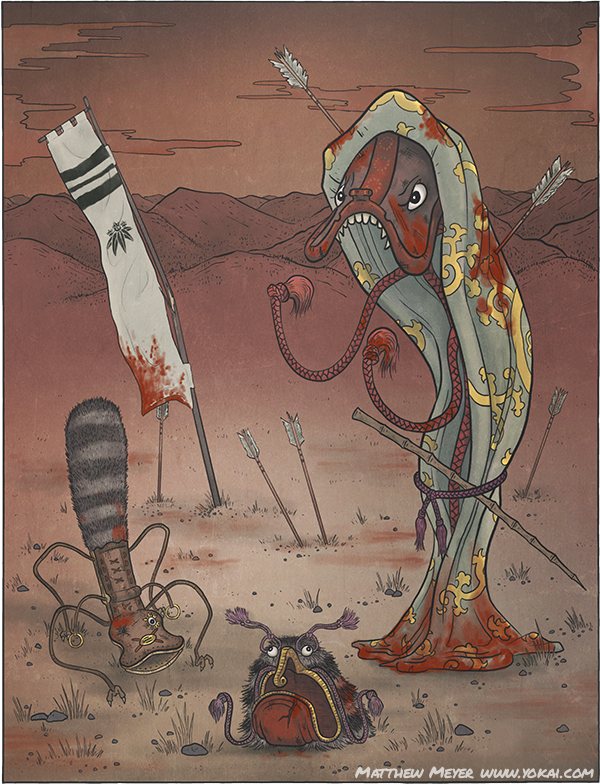Today’s A-Yokai-A-Day is a 3-in-1.
When doing the illustrations for my books, I have often combined multiple tsukumogami into a single illustration and single page. There are a few reasons for this. The first one being that sometimes it just makes sense to combine like tsukumogami. Today’s, for example, feature three battlefield creatures. They are not necessarily related to each other, but they certainly go well together. They work better as a single illustration than as three separate ones. The same thing goes for my illustration of the musical instrument tsukumogami.
The other reason is that there is often very little written information on tsukumogami. In many cases, all that exists is a single illustration. If we are lucky, there is even a name left over. So it order to fill a page it helps to have multiple tsukumogami on one page of the book. Otherwise there would be a name and little else.
The reason so few tsukumogami have descriptions is that a lot of them were mass-created by artists in hyakki yagyou emaki scrolls. These are some of the earliest yokai illustrations, going back to the 14th century, and it is the popularity of these silly illustrated scrolls that created the yokai booms of the later centuries. In these early picture scrolls, most often all we see is a silly creature, and its interpretation is left up to the viewer. In some of the later scrolls we get names tacked on to familiar creatures. And finally, during the Edo period books, we occasionally see stories added on to these creatures.
These stories do not necessarily have any connection to real legends. Quite often, they are the result of creative storytelling on the part of Toriyama Sekien in order to sell more books. He might take an illustration from an older yokai scroll and a famous character from history and just cobble together a story to connect the two. It worked, because he was very successful, and the stories stuck.
Personally, I love his additions, even if they are purely made up and have no connection to actual myths. After all, all myths have to be made up by somebody at some point, so why not him? And I think everybody loves looking at tsukumogami, so adding a little backstory to them only makes them more interesting.
To view their entries on yokai.com, click here: Furuutsubo, Kurayarou, or Abumiguchi
You can view all three of them in my book, The Hour of Meeting Evil Spirits.

